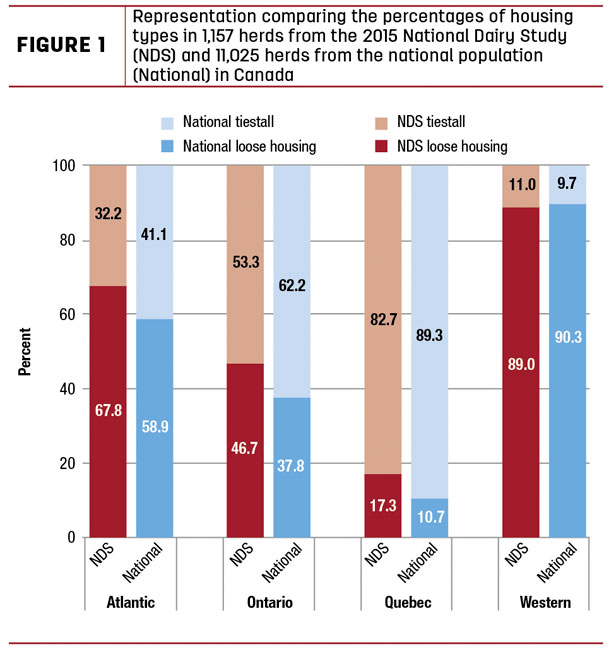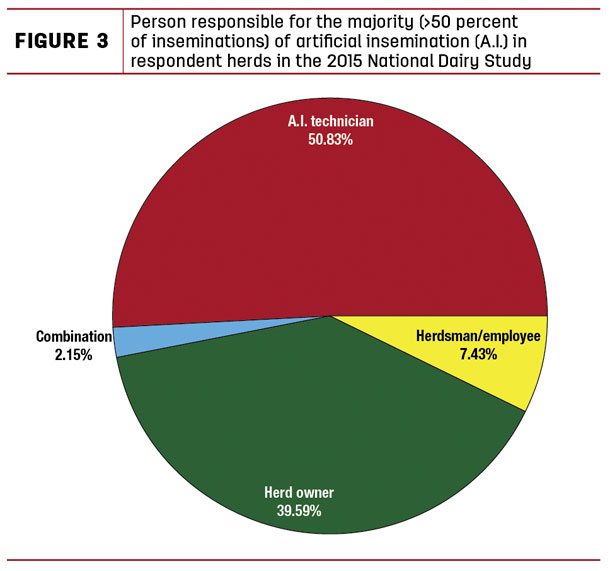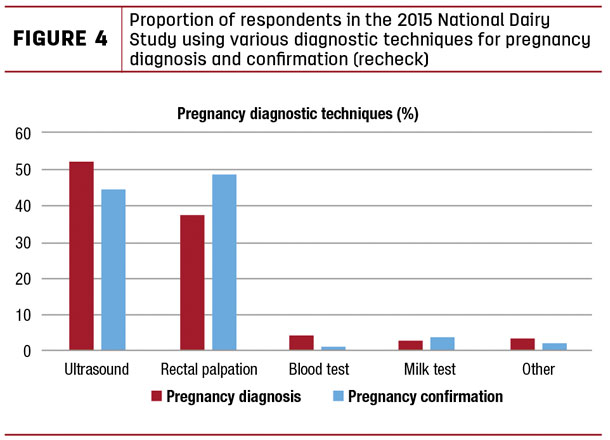As the industry moves toward the adoption of new and varied technologies, the breadth in management continues to increase. Results from the 2015 Canadian National Dairy Study (NDS) described some of the variability in reproductive management practices employed on dairy farms across Canada.
The survey, offered to all Canadian dairy producers, consisted of 189 questions focused on herd dynamics, biosecurity, reproductive practices, calf health, animal care and milking practices.
The goal was to quantify and describe common practices among Canadian producers and in turn, establish benchmarks for the industry.
There were 24 questions relating to reproduction focused on estrous detection, breeding, pregnancy diagnosis and pregnancy confirmation.
The 1,062 producers who completed the survey fairly represent the Canadian producer population by region and barn style, according to the Canadian Dairy Information Centre 2014 (Figure 1).

Overall, there were a number of interesting relationships between the utilization of reproductive practices and the farmer/farm demographic characteristics of the respondents, such as age and education level of producers, geographic location, barn style and herd size.
Estrous detection
In terms of estrous detection methods, the traditional method of visual detection was most commonly used in all groups of animals compared to hormonal synchronization, automated activity systems or the use of a bull (Figure 2).

Heifers respond poorly to hormonal synchronization in comparison to cows but show estrous behaviour over longer periods with a higher frequency of mounting.
Heifers in estrous can therefore be more easily identified, which may explain the increased use of visual detection in heifers compared to cows.
Larger herds (80-plus cows) tended to use more activity systems and less visual or hormonal synchronization. Mounting behaviour and increased activity are associated with an increased number of animals in estrus, which is obviously correlated with herd size.
Similarly, herds with freestall housing were also more likely to use activity systems for heat detection compared to those housed in tiestalls.
Automated activity systems work most effectively when cows are loose-housed and free to exhibit higher levels of physical activity.
Older producers (60-plus years of age) were much more likely to use visual detection than younger producers, who tended to use hormonal synchronization and a combination of estrous detection methods.
Breeding methods
For breeding, 80 percent of herds used artificial insemination (A.I.) only, 3 percent used natural service only and 17 percent used a combination of both.
As shown in Figure 3, most producers that use A.I. rely on a technician for the majority of breedings.

Large herds and those in freestall barns were more likely to use some natural service, whereas small herds and those housed in tiestalls used almost exclusively A.I.
In a freestall or large herd with a greater number of animals to breed, it could be that producers find it more practical to keep and use a bull for breeding. However, on a smaller farm, breeding animals to a bull can be more labour- intensive and less convenient than A.I.
Producers with a lower level of education tended to use more natural service; and, regionally, herds in the Western provinces used more natural service than farms in other parts of the country.
Pregnancy diagnosis
Ultrasound was the most commonly employed means of pregnancy diagnosis (Figure 4) and was most heavily used on large or freestall farms.

Ultrasound diagnostics can be used as early as 21 days post-breeding, advantageously shortening the interval between insemination to pregnancy diagnosis.
In contrast, this finding differs from what has been reported in the U.S., where rectal palpation is more common than ultrasound on large farms.
The incidence of early embryonic loss in high-producing dairy cattle is about 15 to 25 percent, with pregnancy loss exceeding 20 percent on some farms.
Rechecking cows around 60 days post-breeding can be useful in identifying a greater proportion of pregnancy loss, thus significantly reducing the number of days open for these cows.
The use of ultrasonography as a pregnancy confirmation method can be useful to determine fetal sex and incorporated into culling decisions or management of replacements.
Sixty-nine percent of NDS participants reported that they recheck cows for pregnancy and although the most common method for pregnancy diagnosis was ultrasound, rectal palpation was the most common method used for rechecking/confirmation (Figure 4).
The results of the NDS demonstrate the adoption of reproductive management practices varies considerably across Canadian dairy farms, and decisions are influenced by both farm- and producer-level factors.
The authors thank all Canadian dairy producers who participated in the National Dairy Study 2015 and all research assistants who input and processed data from the questionnaire.
Appreciation also goes out to the dairy stakeholders and researchers from the various veterinary colleges for their collaboration and support.
This study was supported by the Dairy Research Cluster 2 Program and funded by Dairy Farmers of Canada, Agriculture and Agri-Food Canada, Canadian Dairy Commission, and Natural Sciences and Engineering Research Council. ![]()
Sabrina Van Schyndel is a recent graduate of the MSc program at the University of Guelph.
This and other data on reproductive methods was published in the Journal of Dairy Science. Go to the National Dairy Study web site for more information on the complete 2015 study.








